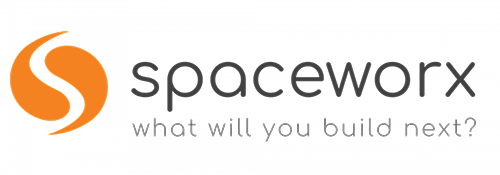IoT in real estate has allowed for several new discoveries in communication, collaboration and overall enhancements of building operations as well as enabling efficiencies in the workplace
The Internet of Things (IoT) is the connection of physical objects with embedded sensors and software, to exchange data over the Internet with devices and systems. While one of the first IoT devices was first invented in the 1980s, the concept didn’t officially receive a name – IoT, until 1999. Since its introduction, the technology has helped to shape the transformation of almost every industry, with IoT in real estate not being an exception.
When it comes to IoT and Smart Buildings, as well as the workings of a workplace, IoT has played an integral part in transforming these areas into buildings and workplaces that are smarter and more sustainable. It has helped to improve operations in areas such as:
-
- Enhancement of energy efficiency in buildings
-
- Reduction of maintenance costs through predictive maintenance
-
- Optimisation of the space utilisation
-
- Improved safety, security and more comfortable internal environments
-
- Usage of sensors, automated controls and alerts to streamline and manage systems and processes
Why is IoT important?
Now that even everyday objects can be connected over the Internet through embedded devices, communication and collaboration is not only possible, but easier than ever. Through the utilisation of the cloud and technologies such as big data and analytics, information can be collected, stored and distributed between people and devices, within seconds and with little human involvement. IoT connects the physical and digital worlds, enabling shared communication in ways that were not previously possible. So, when it comes to IoT and smart buildings, this communication and collaboration makes many processes and systems easier to use and enables more efficient operations throughout the building. It also helps to do the same in workplaces and their workflows, ensuring that less energy is used and costs are reduced, thus making the operations more sustainable.
IoT in Smart Buildings and Smart Workplaces
IoT is one of the key drivers that have made it possible for buildings and workplaces to transform into smart buildings and smart workplaces. Through its technologies and use of sensors to detect movement and gather data, enhanced operations have been made possible for building owners, operators and occupants, as well as the visitors who come in and out of the premises.
Some of the key areas where IoT has contributed to more efficient operations of a workplace, include:
-
- Managing inventory through sensors that detect when stocks are running low and need to be replaced. This enhances the experience for both staff and visitors in a workplace, with minimal physical checks and operations in areas such as supplies for office operations, kitchens and toilets.
-
- Minimising human error by using automated systems that enter data, such as personal details, business information or visitor information that needs to be stored, managed and monitored.
-
- Reducing costs through predictive analysis, where power consumption and equipment are monitored through sensors, to identify patterns in usage, and when service and repairs of equipment become necessary.
-
- Reducing energy usage and wastage through smart lighting solutions and sensors that can detect the presence of individuals in rooms, and switches off unnecessary lights and air conditioning, or adjusts thermostats according to the number of people in the room to provide a safe and comfortable environment.
-
- Improving collaboration and productivity of staff through systems such as occupancy management, car park management, scheduling of meeting rooms and coordination of workstation bookings, to enable team members to understand and be aware of desk, room and space usage in order to schedule tasks and meetings efficiently.
-
- Improving sanitation and hygiene through automated systems that use sensors and alerts to inform when desks, rooms and toilets need cleaning, or when supplies such as soap and toilet paper need to be replenished. This also improves the experience for employees, visitors and the cleaning staff who can reduce their manual checks and save time.
-
- Enhancing the visitor experience with automated checks of temperature, collection of personal data and entry into digital databases.
Benefits of IoT
While these systems and workflows can function independently, IoT in real estate, or in any industry, allows for alignment and integration of processes, to be available on a central dashboard, where managers and operators are able to view and manage the information from one location, thus saving time and enabling easier, faster and more effective decision making.
These processes or systems can also be automated where devices are put on a schedule to operate during a certain time period – e.g., during business hours, and be turned off or be placed on sleep mode overnight. This also reduces the use of energy, reduces emissions and reduces electricity costs.
IoT and smart buildings have also highlighted the efficient use of data, in order to monitor and analyse the use of energy, equipment, trends of occupancy and many other areas, which provide vital information in the operations of a building and workplace. This makes for more informed business decision making, but also helps workplace managers to be more responsible in operations, to be more sustainable and reduce emissions by cutting down unnecessary use of lighting and HVAC equipment.
The future of the Smart Building and Smart Workplace with IoT
While IoT in real estate has come a long way and enabled a myriad of possibilities for smarter and more sustainable workplaces, the future holds much more exciting opportunities, as well. Even though the digitisation of processes has enabled more connectedness between people and devices, and with a data-driven focus, there are improvements being made to make these technologies more people centric, allowing for even more enhanced interactions that can improve employee productivity, while also improving the visitor and customer experience.
The future of smart workplaces, through IoT, will see an atmosphere where the integration of the physical space, people and technology will bring about greater opportunities for the employer and the employee, with minimal distractions, saved time and energy, and the optimal use of available spaces.
IoT and smart buildings and IoT in real estate have a bright future, and the prospects for all stakeholders are more positive than ever.
Spaceworx offers a number of smart building solutions backed by the latest IoT technology. Low cost combined with easy installation and simplified navigation, make these the ideal solutions to transform buildings and workplaces in smarter and more sustainable ones. Learn more at the Marketplace






